The Most Effective SAFe Scrum Master Certification Exam Preparation
The ScholarAcad Advantage
1. Module: Introduction of Scrum in SAFe
- Concepts of Basic Agile Development
- Basics of Scrum
- Establish Agile Team in SAFe Enterprises
2. Module: Scrum Master Role Characterization
- Scrum Master Responsibilities
- Effective Scrum Master Characteristics
- High-performing Teams
- Use Powerful Questions to Coach Agile Team
- Team Events
- Cross Team Collaboration
- Resolve Conflicts in Teams
3. Module: Experience PI Planning
- Basics of PI Planning
- Drafting PI Planning
- Business Value and Final Plans
- PI Objectives and Final Plan Review
- Facilitate PI Planning
4. Module: Facilitate Iteration Execution
- Plan Iteration
- Track Progress of Iteration
- Refine Backlogs
- Facilitation Iteration Reviews
- Implement Relentless Improvement
- Supports Release-on-Demand and DevOps
5. Module: Finish PI
- Coach IP Iteration
- Preparing Team to Inspect & Adapt Event
6. Module: Practice SAFe
- SAFe Practice in Organizations
View More
Who This Course is For

Prerequisites and Eligibility
No formal prerequisites: Open to individuals with varying levels of experience and backgrounds.
Familiarity with Agile principles and the Scrum framework is beneficial.
Completion of the SAFe for Teams course is required to establish a foundation in SAFe concepts.
Passing the SAFe Scrum Master exam (SSM) validates your understanding of SAFe and Scrum principles.
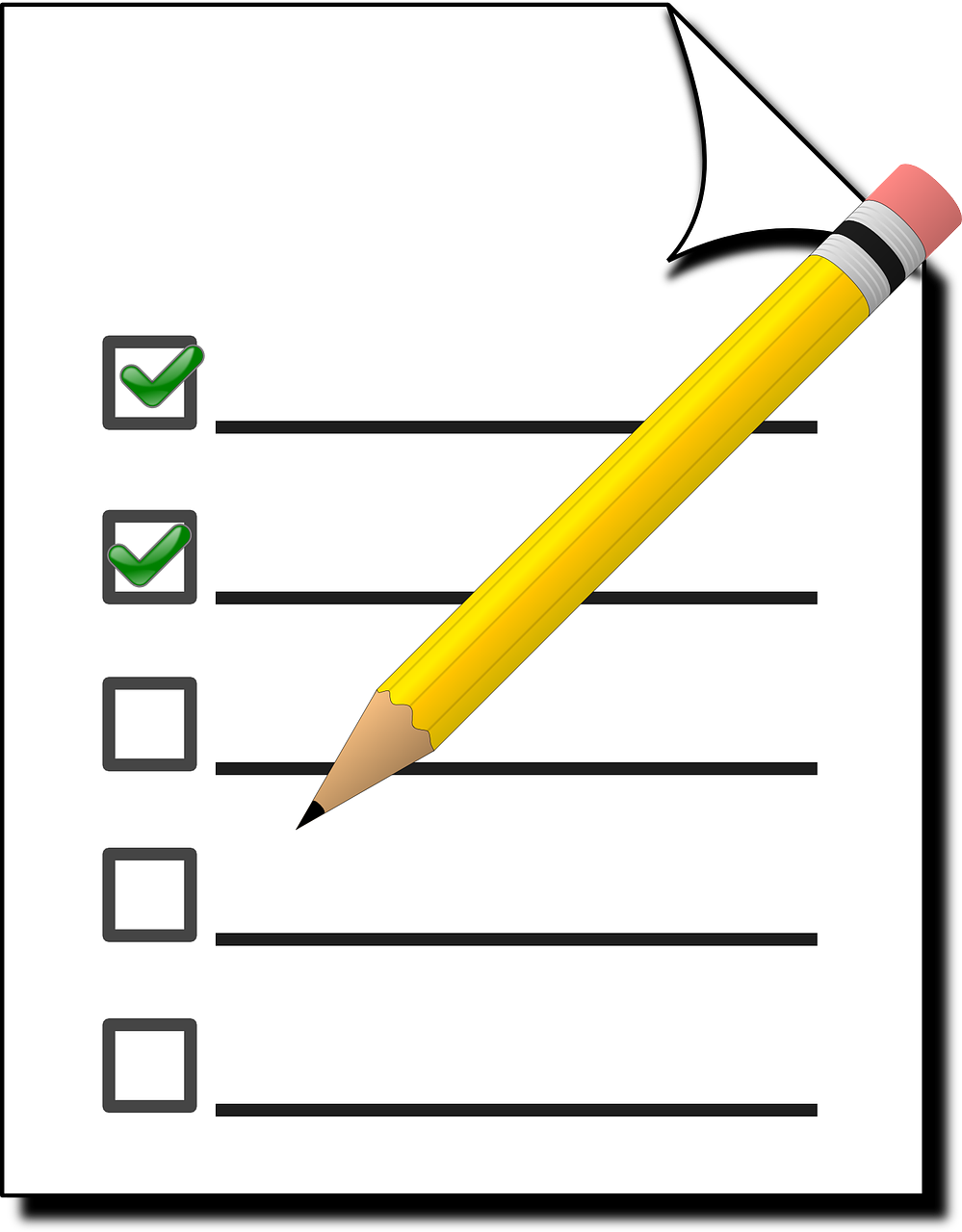
SAFe Scrum Master Certification Among the Highest Paying Certifications





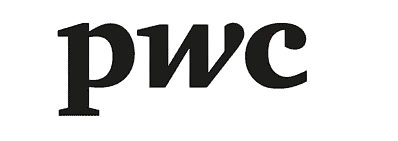
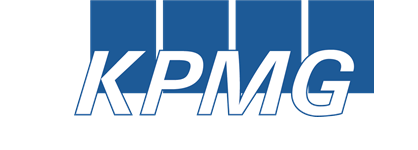



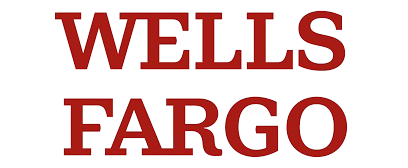
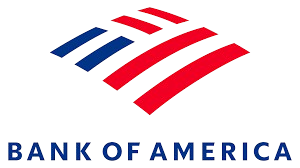

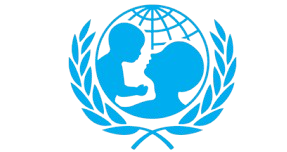


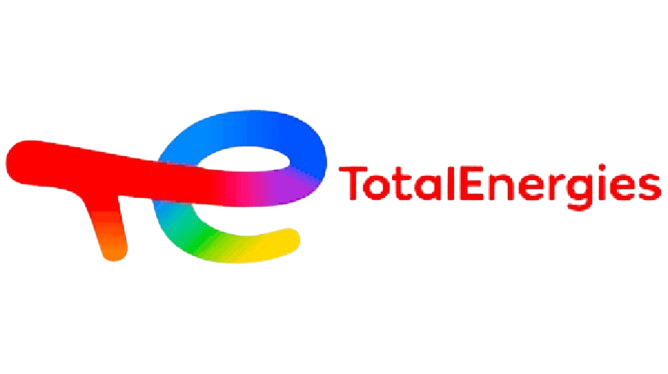




Training Calender For Course SAFe Scrum Master Certification
Your Path to Acing Your SAFe Scrum Master Certification Exam

Grasp the overarching structure and how different components interconnect.
Understand the Scrum framework, its roles, events, artifacts, and ceremonies.
Grasp the principles and practices of Kanban for visualizing work and flow.
Understand the responsibilities of a SAFe Scrum Master.
Believe in continuous improvement and learning.
Participate in simulations, case studies, and practical exercises.
Practice with Mock Exams and Take your exam.
Our SAFe Scrum Master Certification Instructors in Italy
Based in: Rome, Italy
Looking to become an ITIL Managing Professional with ITIL 4? Meet Isabella Rossi, an accredited ITIL trainer based in Rome. Isabella is dedicated to providing comprehensive training in ITIL 4 and helping you achieve the ITIL Managing Professional designation.
Professional Background:
Isabella has over 13 years of experience in IT Service Management across various industries in Italy, focusing on the practical and technical aspects of managing IT services.
Certifications & Strong Knowledge:
- ITIL® 4 Foundation
- ITIL® 4 Managing Professional (Covers CDS, DSV, HVIT, DPI)
- SIAM™ Foundation
- Strong Knowledge: ITSM, Google Hybrid Cloud
Teaching Philosophy:
Isabella believes in a practical and holistic approach, focusing on providing learners with a comprehensive understanding of the ITIL 4 Managing Professional modules. Her teaching philosophy emphasizes:
- Understanding ITIL 4 Principles: Deeply exploring the guiding principles and dimensions of ITIL 4.
- Mastering the MP Modules: Providing practical insights into all four Specialist modules that lead to the Managing Professional designation.
- SIAM Awareness: Understanding how service integration relates to the ITIL Managing Professional.
- Exam Success Focus: Providing comprehensive preparation for all ITIL 4 MP exams.
Course Offerings:
Isabella offers a range of ITIL and SIAM training programs:
- ITIL® 4 Foundation Certification Courses (In-Person and Virtual).
- ITIL® 4 Managing Professional Module Workshops (CDS, DSV, HVIT, DPI).
- SIAM™ Foundation Certification Courses.
- Customized ITIL and SIAM Training for Organizations in Italy.
Why Choose Isabella?
- Local Expertise: Based in Rome, Isabella understands the Italian IT landscape.
- MP Focus: Expertise in the ITIL 4 Managing Professional stream.
- Holistic Approach: Known for her ability to connect different ITIL concepts.
- Strong Cloud Knowledge: Understanding of Google Hybrid Cloud environments.
Location:
Isabella is based in Rome, Italy, and offers training across Italy and virtually.

Isabella Rossi
Experience: 13 years
Based in: Rome, Italy
Looking to become an ITIL Managing Professional with ITIL 4? Meet Isabella Rossi, an accredited ITIL trainer based in Rome. Isabella is dedicated to providing comprehensive training in ITIL 4 and helping you achieve the ITIL Managing Professional designation.
Professional Background:
Isabella has over 13 years of experience in IT Service Management across various industries in Italy, focusing on the practical and technical aspects of managing IT services.
Certifications & Strong Knowledge:
- ITIL® 4 Foundation
- ITIL® 4 Managing Professional (Covers CDS, DSV, HVIT, DPI)
- SIAM™ Foundation
- Strong Knowledge: ITSM, Google Hybrid Cloud
Teaching Philosophy:
Isabella believes in a practical and holistic approach, focusing on providing learners with a comprehensive understanding of the ITIL 4 Managing Professional modules. Her teaching philosophy emphasizes:
- Understanding ITIL 4 Principles: Deeply exploring the guiding principles and dimensions of ITIL 4.
- Mastering the MP Modules: Providing practical insights into all four Specialist modules that lead to the Managing Professional designation.
- SIAM Awareness: Understanding how service integration relates to the ITIL Managing Professional.
- Exam Success Focus: Providing comprehensive preparation for all ITIL 4 MP exams.
Course Offerings:
Isabella offers a range of ITIL and SIAM training programs:
- ITIL® 4 Foundation Certification Courses (In-Person and Virtual).
- ITIL® 4 Managing Professional Module Workshops (CDS, DSV, HVIT, DPI).
- SIAM™ Foundation Certification Courses.
- Customized ITIL and SIAM Training for Organizations in Italy.
Why Choose Isabella?
- Local Expertise: Based in Rome, Isabella understands the Italian IT landscape.
- MP Focus: Expertise in the ITIL 4 Managing Professional stream.
- Holistic Approach: Known for her ability to connect different ITIL concepts.
- Strong Cloud Knowledge: Understanding of Google Hybrid Cloud environments.
Location:
Isabella is based in Rome, Italy, and offers training across Italy and virtually.

Isabella Rossi
Experience: 13 years
Based in: Rome, Italy
Looking to thrive as a Business Analyst in the diverse and evolving Italian market? Meet Isabella Rossi, a passionate and certified Business Analysis expert based in Rome. Isabella is dedicated to helping professionals develop the analytical and problem-solving skills needed for success in Italy.
Professional Background:
Isabella has over 9 years of experience as a Business Analyst in Italy, working across industries such as finance, tourism, and technology. She has a strong grasp of the Italian business landscape and the importance of stakeholder collaboration.
Certifications & Expertise:
- Certified Business Analysis Professional (CBAP)®
- ECBA™ (Entry Certificate in Business Analysis)
- Expertise: Stakeholder Analysis, Requirements Documentation, Business Rules Analysis, Agile and Waterfall Methodologies, Italian Business Communication
Teaching Philosophy:
Isabella believes in an engaging, collaborative, and practical approach to Business Analysis training. Her teaching philosophy emphasizes:
- Understanding the Italian Business Culture: Integrating global Business Analysis techniques with the communication styles and business practices prevalent in Italy.
- Interactive Learning Environment: Utilizing group activities, case studies, and discussions to foster a deeper understanding.
- Focus on Practical Application: Emphasizing the use of Business Analysis tools and techniques in real-world Italian scenarios.
- Supporting Career Growth: Providing guidance and insights for career advancement in the Italian Business Analysis market.
Course Offerings:
Isabella offers a range of Business Analysis training programs:
- CBAP® Certification Preparation Courses (In-Person in Rome and Virtual).
- ECBA™ Certification Preparation Workshops.
- Comprehensive Business Analysis Fundamentals Courses.
- Specialized workshops on Stakeholder Management and Communication.
Why Choose Isabella?
- Local Expertise: Based in Rome, Isabella understands the Italian business environment and culture.
- Comprehensive Certification Knowledge: Holds both CBAP® and ECBA™ certifications, catering to different career stages.
- Emphasis on Collaboration: Reflects the importance of teamwork in Italian business.
- Passionate and Supportive Trainer: Committed to helping students succeed in their Business Analysis journey.
Location:
Isabella is based in Rome, Italy, and offers training across Italy and virtually.

Isabella Rossi
Experience: 9 years
SAFe Scrum Master Certification Earn The Coveted SAFe Scrum Master Certification Certification

Sample Certificate Image
View More
Our Learners Love Us
Scholaracad's Business Analysis Foundation training with Umesh was superb. His deep knowledge and practical examples made learning very effective. The Scholaracad team was very supportive throughout. Molto bene!

Scholaracad's COBIT training with Umesh was superb. His deep knowledge and practical examples made learning very effective. The Scholaracad team was very supportive throughout. Molto bene!

The PRINCE2 Foundation and Practitioner course with Scholaracad was really valuable. Trainer Marco was very knowledgeable and explained the concepts clearly, using examples relevant to projects in Italy. The Scholaracad team was very responsive and helpful with all the arrangements. Grazie mille!

Learning Objectives
General Frequently Asked Questions
1. What is a SAFe Scrum Master?
A SAFe Scrum Master is a professional who facilitates Agile teams within the Scaled Agile Framework (SAFe) to deliver value efficiently. They coach teams, remove impediments, and ensure alignment with SAFe principles.
2. What is the difference between a Scrum Master and a SAFe Scrum Master?
A traditional Scrum Master focuses on a single team, while a SAFe Scrum Master works within the broader SAFe framework, often supporting multiple teams and aligning them with the Program Increment (PI) objectives.
3. What are the key responsibilities of a SAFe Scrum Master?
- Facilitating Agile ceremonies (e.g., Sprint Planning, Daily Standups, Retrospectives).
- Removing impediments for the team.
- Coaching teams on Agile principles and practices.
- Supporting the Product Owner in backlog refinement.
- Ensuring alignment with PI objectives.
4. What skills are required to become a successful SAFe Scrum Master?
- Strong facilitation and communication skills.
- Deep understanding of Agile and SAFe principles.
- Problem-solving and conflict resolution abilities.
- Leadership and coaching skills.
- Knowledge of Lean-Agile practices.
5. Is certification necessary to become a SAFe Scrum Master?
While not mandatory, certification (e.g., SAFe Scrum Master Certification) is highly recommended as it validates your knowledge and increases employability.
6. What is the SAFe Scrum Master Certification?
The SAFe Scrum Master Certification (SSM) is a credential offered by Scaled Agile, Inc. It demonstrates expertise in applying Scrum within the SAFe framework.
7. How do I get certified as a SAFe Scrum Master?
- Attend the official SAFe Scrum Master course (2-day training).
- Pass the online exam.
- Maintain certification through continuous learning and renewal.
8. What is the cost of the SAFe Scrum Master certification?
The cost is typically around $995-$1,295 for the 2-day course, depending on the training provider.
9. How long does the SAFe Scrum Master certification last?
The certification is valid for 1 year and requires renewal annually by earning 10 continuing education units (SEUs) and paying a renewal fee.
10. What is the average salary of a SAFe Scrum Master?
The average salary varies by location and experience:
- USA : $90,000–$120,000 per year.
- India : ₹10–20 lakhs per year.
- Europe : €60,000–€90,000 per year.
11. What industries hire SAFe Scrum Masters?
Industries include:
- IT and software development.
- Financial services.
- Healthcare.
- Manufacturing.
- Government and defense.
12. What is the career path for a SAFe Scrum Master?
Junior Scrum Master → SAFe Scrum Master → Release Train Engineer (RTE) → Agile Coach → Transformation Lead.
13. Can a SAFe Scrum Master work remotely?
Yes, many organizations allow remote work, especially in tech companies or those with distributed teams.
14. What tools should a SAFe Scrum Master be familiar with?
- Jira, Azure DevOps, or Rally for Agile project management.
- Confluence or SharePoint for documentation.
- Collaboration tools like Slack, Microsoft Teams, or Zoom
15. What is a Release Train Engineer (RTE), and how does it relate to a SAFe Scrum Master?
An RTE facilitates Agile Release Trains (ARTs) at the program level, coordinating multiple teams. A SAFe Scrum Master can advance to become an RTE.
16. What is the difference between a SAFe Scrum Master and an Agile Coach?
A SAFe Scrum Master focuses on team-level execution, while an Agile Coach works at the organizational level to drive Agile transformation.
17. How does SAFe differ from other Agile frameworks like Scrum or Kanban?
SAFe is a scaled framework designed for large enterprises, integrating Scrum, Kanban, and Lean principles to coordinate multiple teams.
18. What challenges do SAFe Scrum Masters face?
- Resistance to Agile adoption.
- Balancing team autonomy with organizational goals.
- Managing dependencies across teams.
- Aligning with PI objectives.
19. How important is experience in becoming a SAFe Scrum Master?
Experience in Agile methodologies and team facilitation is crucial. Prior roles as a Scrum Master, Project Manager, or Team Lead are beneficial.
20. Can a non-technical person become a SAFe Scrum Master?
Yes, but understanding the technical aspects of the team’s work can enhance effectiveness.
21. What is a Program Increment (PI) in SAFe?
A PI is a timebox (typically 8–12 weeks) during which multiple Agile teams work together to deliver value. The SAFe Scrum Master ensures their team contributes to PI objectives.
22. What is PI Planning, and what role does the SAFe Scrum Master play?
PI Planning is a key event where teams plan work for the upcoming PI. The SAFe Scrum Master facilitates team preparation, participation, and follow-through.
23. How does a SAFe Scrum Master handle conflicts within the team?
By fostering open communication, mediating discussions, and helping the team find collaborative solutions.
24. What is the role of metrics in a SAFe Scrum Master’s job?
Metrics (e.g., velocity, burndown charts) help track progress, identify bottlenecks, and improve team performance
25. How does a SAFe Scrum Master contribute to continuous improvement?
By facilitating retrospectives, encouraging feedback loops, and promoting a culture of learning and adaptation.
26. What is the importance of servant leadership for a SAFe Scrum Master?
Servant leadership emphasizes empowering the team, removing obstacles, and fostering a collaborative environment.
27. How does a SAFe Scrum Master interact with the Product Owner?
They collaborate to ensure the backlog is well-refined, priorities are clear, and the team delivers value consistently.
28. What is the role of a SAFe Scrum Master in DevOps?
They support collaboration between development and operations teams to enable continuous delivery and integration.
29. Can a SAFe Scrum Master work with multiple teams?
Yes, they often support multiple teams, especially in large-scale Agile implementations.
30. What is the typical team size managed by a SAFe Scrum Master?
5–11 members per team, following the Scrum guidelines.
31. How does a SAFe Scrum Master handle scope changes?
By working with the Product Owner and stakeholders to assess impact, prioritize changes, and adjust plans accordingly.
32. What is the role of a SAFe Scrum Master in risk management?
They identify risks early, escalate when necessary, and help the team mitigate them.
33. How does a SAFe Scrum Master foster innovation?
By encouraging experimentation, supporting new ideas, and creating a safe environment for learning.
34. What soft skills are critical for a SAFe Scrum Master?
Empathy, active listening, adaptability, and emotional intelligence
35. How does a SAFe Scrum Master measure success?
Through team performance metrics, stakeholder satisfaction, and alignment with business goals.
36. What is the role of a SAFe Scrum Master in a distributed team?
Facilitating communication, ensuring alignment, and addressing challenges unique to remote work.
37. How does a SAFe Scrum Master stay updated with industry trends?
By attending conferences, joining Agile communities, reading blogs/books, and participating in webinars.
38. What are the common mistakes made by new SAFe Scrum Masters?
- Micromanaging the team.
- Focusing too much on processes rather than outcomes.
- Ignoring organizational culture and resistance.
39. How does a SAFe Scrum Master handle burnout in the team?
By promoting work-life balance, managing workload, and fostering a supportive team culture.
40. What is the role of a SAFe Scrum Master in Lean Portfolio Management?
They ensure the team’s work aligns with portfolio objectives and strategic themes.
41. .How does a SAFe Scrum Master contribute to value delivery?
By ensuring the team focuses on delivering high-priority features and meeting PI objectives.
42. What is the difference between SAFe 6.0 and earlier versions?
SAFe 6.0 introduced enhancements like the Continuous Learning Culture competency and improved guidance for Business Agility
43. What is the role of a SAFe Scrum Master in a Waterfall-to-Agile transition?
They guide the team in adopting Agile practices, address resistance, and ensure smooth integration into the SAFe framework.
44. How does a SAFe Scrum Master handle dependencies between teams?
By coordinating with other Scrum Masters and stakeholders to resolve cross-team dependencies.
45. What is the role of a SAFe Scrum Master in Agile maturity assessments?
They help evaluate the team’s Agile practices and identify areas for improvement.
46. How does a SAFe Scrum Master balance flexibility with deadlines?
By prioritizing work, managing scope, and ensuring the team stays focused on delivering value.
47. What is the role of a SAFe Scrum Master in fostering psychological safety?
They create an environment where team members feel safe to share ideas, take risks, and admit mistakes.
48. How does a SAFe Scrum Master handle resistance to change?
By understanding concerns, providing education, and demonstrating the benefits of Agile practices.
49. What is the role of a SAFe Scrum Master in fostering a Lean-Agile mindset?
They promote principles like customer focus, continuous improvement, and waste reduction.
50. What is the future outlook for SAFe Scrum Masters?
As organizations increasingly adopt Agile and SAFe, the demand for skilled SAFe Scrum Masters is expected to grow, making it a promising career choice.
View More
1. What are the key benefits of becoming a SAFe Scrum Master?
- Career growth in Agile and SAFe environments.
- Opportunities to lead and coach teams.
- Enhanced problem-solving and leadership skills.
- High demand for skilled SAFe professionals.
- Competitive salary and job security.
2. How does being a SAFe Scrum Master benefit my career?
It opens doors to roles like Release Train Engineer (RTE), Agile Coach, or Transformation Lead, offering upward mobility in Agile and Lean-Agile careers.
3. Does being a SAFe Scrum Master improve my leadership skills?
Yes, it enhances leadership abilities through servant leadership, team facilitation, and conflict resolution.
4. Is the SAFe Scrum Master role financially rewarding?
Yes, SAFe Scrum Masters earn competitive salaries due to their specialized skills in scaling Agile practices.
5. What personal satisfaction comes from being a SAFe Scrum Master?
Helping teams succeed, fostering collaboration, and seeing tangible results from your efforts provide immense satisfaction.
6. How does being a SAFe Scrum Master enhance my communication skills?
You’ll constantly interact with teams, stakeholders, and leadership, improving your ability to communicate effectively at all levels.
7. Does being a SAFe Scrum Master offer flexibility in work?
Yes, many organizations allow remote work, especially for experienced SAFe Scrum Masters managing distributed teams.
8. What are the networking benefits of being a SAFe Scrum Master?
You’ll collaborate with cross-functional teams, Agile coaches, RTEs, and leaders, expanding your professional network
9. How does being a SAFe Scrum Master contribute to organizational success?
By ensuring teams deliver value efficiently, aligning with business goals, and driving continuous improvement
10. Does being a SAFe Scrum Master make me more adaptable?
Yes, working in dynamic Agile environments helps you adapt quickly to changes and challenges.
11. What are the benefits of SAFe Scrum Master certification?
- Validates your expertise in SAFe and Agile principles.
- Increases employability and earning potential.
- Provides access to SAFe communities and resources.
12. How does being a SAFe Scrum Master foster innovation?
By encouraging experimentation, supporting new ideas, and creating an environment where creativity thrives.
13. Does being a SAFe Scrum Master improve team performance?
Yes, by removing impediments, facilitating ceremonies, and coaching teams on best practices.
14. How does being a SAFe Scrum Master promote work-life balance?
The role emphasizes servant leadership and team empowerment, reducing micromanagement and stress.
15. What are the mental health benefits of being a SAFe Scrum Master?
Fostering psychological safety and resolving conflicts can create a positive work environment, benefiting both you and your team
16. How does being a SAFe Scrum Master help with time management?
Facilitating Agile ceremonies and planning processes teaches you to manage time effectively and prioritize tasks.
17. Does being a SAFe Scrum Master increase my problem-solving skills?
Yes, addressing impediments and dependencies sharpens your ability to think critically and find solutions.
18. What are the benefits of working in a SAFe environment as a Scrum Master?
- Access to structured frameworks like PI Planning.
- Collaboration with multiple teams and stakeholders.
- Clear alignment with organizational goals.
19. How does being a SAFe Scrum Master enhance my resume?
Adding SAFe expertise makes your profile stand out, especially in large enterprises adopting scaled Agile practices.
20. What are the benefits of being part of the SAFe community?
Access to global networks, events, and resources that support continuous learning and professional growth.
21. How does being a SAFe Scrum Master benefit distributed teams?
Your skills in facilitating remote collaboration and resolving dependencies are invaluable for distributed teams
22. Does being a SAFe Scrum Master teach emotional intelligence?
Yes, understanding team dynamics and resolving conflicts require high emotional intelligence.
23. How does being a SAFe Scrum Master help organizations scale Agile?
By bridging gaps between teams and ensuring alignment with SAFe principles, you contribute to successful Agile scaling.
24. What are the benefits of fostering a Lean-Agile mindset?
Improved efficiency, reduced waste, and faster delivery of value to customers.
25. Does being a SAFe Scrum Master help with change management?
Yes, guiding teams through Agile transformations builds expertise in managing change effectively.
26. How does being a SAFe Scrum Master promote continuous learning?
You’re constantly exposed to new tools, techniques, and industry trends, fostering a culture of lifelong learning
27. What are the benefits of facilitating PI Planning?
PI Planning ensures alignment, clarifies objectives, and fosters collaboration across teams, leading to better outcomes.
28. How does being a SAFe Scrum Master improve stakeholder relationships?
By ensuring transparency, delivering value, and maintaining open communication with stakeholders.
29. Does being a SAFe Scrum Master help reduce project risks?
Yes, by identifying risks early and implementing mitigation strategies.
30. What are the benefits of working with cross-functional teams?
Exposure to diverse perspectives and skill sets enhances your understanding of different domains and improves collaboration.
31. How does being a SAFe Scrum Master drive customer satisfaction?
By ensuring teams focus on delivering high-priority features and meeting customer needs.
32. Does being a SAFe Scrum Master encourage innovation in the organization?
Yes, by fostering a culture of experimentation and continuous improvement.
33. What are the benefits of servant leadership in this role?
Empowering teams, building trust, and creating a supportive environment lead to higher engagement and productivity.
34. How does being a SAFe Scrum Master benefit product quality?
By promoting practices like continuous integration, testing, and feedback loops, you ensure higher-quality deliverables.
35. Does being a SAFe Scrum Master improve team morale?
Yes, by fostering psychological safety, recognizing achievements, and resolving conflicts.
36. What are the benefits of working in a fast-paced Agile environment?
You develop resilience, adaptability, and the ability to thrive under pressure.
37. How does being a SAFe Scrum Master contribute to business agility?
By aligning teams with strategic goals and enabling faster responses to market changes
38. What are the benefits of using metrics in this role?
Metrics help track progress, identify bottlenecks, and demonstrate the team’s impact on business outcomes
39. Does being a SAFe Scrum Master enhance my coaching skills?
Yes, coaching teams on Agile practices and helping them grow professionally develops your mentoring abilities.
40. How does being a SAFe Scrum Master promote DevOps practices?
By fostering collaboration between development and operations teams to enable continuous delivery.
41. What are the benefits of working with Product Owners?
Close collaboration ensures clear priorities, effective backlog management, and alignment with customer needs.
42. Does being a SAFe Scrum Master help reduce technical debt?
Yes, by promoting sustainable development practices and addressing issues early.
43. How does being a SAFe Scrum Master improve decision-making?
By encouraging data-driven decisions and empowering teams to self-organize.
44. What are the benefits of handling dependencies effectively?
Reduced delays, improved coordination, and smoother delivery of value.
45. Does being a SAFe Scrum Master help organizations achieve their goals?
Yes, by ensuring teams align with PI objectives and strategic themes.
46. How does being a SAFe Scrum Master promote a culture of trust?
By fostering transparency, open communication, and collaboration.
47. What are the benefits of working in a SAFe ecosystem?
Structured frameworks, clear roles, and alignment with organizational goals make scaling Agile easier.
48. Does being a SAFe Scrum Master prepare me for leadership roles?
Yes, the skills you develop position you for roles like RTE, Agile Coach, or Transformation Lead.
49. How does being a SAFe Scrum Master benefit the organization’s bottom line?
By improving efficiency, reducing waste, and delivering value faster, you directly impact profitability.
50. What is the long-term benefit of being a SAFe Scrum Master?
A fulfilling career with opportunities for growth, leadership, and making a meaningful impact on teams and organizations.
View More
View More
View More
View More
View More
Expert Articles on SAFe Scrum Master Certification
Read More...
Read More...
Read More...
Italy: A Hub for Technology, Learning, and Careers
With €50B+ in annual tech revenue and 30+ unicorns, Italy blends historic craftsmanship with cutting-edge Agile, cybersecurity, and Industry 4.0 leadership – now the EU’s third-largest digital economy.
Agile & Digital Transformation
Public Sector Revolution
- Italia Digitale 2026 – SAFe Agile adoption across 600+ services
- Hybrid Agile-Waterfall for Genoa Smart Port IoT systems (€1B project)
Cyber Sovereignty
- CSIRT Italia – ITIL4 & PCI-DSS for critical infrastructure
- Leonardo SpA – DevSecOps for defense/aerospace tech
Tech & Made in Italy Innovation
Industrial Excellence
Startup Ecosystem
- Milano Innovation District – 1,200+ Agile startups
- Satispay – Scrum-built fintech unicorn
Why Italy?
✅ #1 EU manufacturer with 600K+ engineers
✅ 50,000+ annual Agile certifications (largest SAFe market in Southern Europe)
✅ Golden Visa for tech investors
Key Tech Locations
- Crypto Valley – Blockchain regulatory sandbox
- Politecnico AI Hub
- Cyber Defense Campus (NATO partnerships)
- Space Economy Hub
- Automotive DevOps – Stellantis R&D
Industry 4.0 Testbeds
Need More Information ?
Have more questions or need personalized guidance ?

Top Companies in Italy Hiring SAFe Scrum Master Certification Professionals in 2025
| Company Name | Role | Job Description | Job Link |
|---|---|---|---|
| TechTrend Italy | Scrum Master | TechTrend Italy in Milan seeks a Scrum Master to implement SAFe practices. This role facilitates Agile ceremonies, ensuring smooth sprint execution. The Scrum Master coaches teams, removes impediments, and tracks progress using Jira. Candidates need SAFe certification and Agile experience. They will align product owners with business goals, fostering collaboration. The role demands strong communication for stakeholder engagement. The Scrum Master promotes transparency, innovation, and continuous improvement. Proficiency in Italian and English is preferred. TechTrend offers a vibrant workplace with growth opportunities. The role supports fast-paced software projects, requiring adaptability. Candidates should excel in conflict resolution and leadership. The Scrum Master collaborates with global teams, ensuring cultural alignment. This role offers exposure to cutting-edge technology, driving impactful solutions. Join TechTrend to shape Milan’s tech ecosystem, contributing to innovative projects while advancing your expertise in a supportive, forward-thinking environment. The role suits Agile enthusiasts passionate about transformation in a vibrant market. | Job Link |
| GlobalTech Italy | Senior Scrum Master | GlobalTech Italy in Milan is hiring a Senior Scrum Master to lead SAFe adoption. This role oversees Agile teams, facilitating PI planning and sprint ceremonies. The Senior Scrum Master mentors coaches, removes blockers, and optimizes workflows using Confluence. Candidates need SAFe certification and extensive Agile experience. They will collaborate with product managers, ensuring high-value feature delivery. The role requires leadership, stakeholder engagement, and process optimization skills. The Senior Scrum Master drives accountability, innovation, and culture. Fluency in English is essential, with Italian preferred. GlobalTech offers career advancement in a collaborative environment. The role supports global projects, requiring cultural awareness. Candidates should excel in conflict resolution and strategic leadership. Join GlobalTech to lead transformative initiatives in Milan’s tech landscape, driving innovative software solutions while growing your expertise. This role offers exposure to transformative technology and collaboration in a dynamic setting, fostering professional development. | Job Link |
| InnoVate Italy | Lead Scrum Master | InnoVate Italy in Milan seeks a Lead Scrum Master to drive SAFe initiatives. This role guides multiple Agile teams, ensuring efficient delivery of complex projects. The Lead Scrum Master facilitates key ceremonies, mentors team members, and aligns deliverables with enterprise goals. Candidates need SAFe certification and leadership experience with Azure DevOps. They will manage backlogs, mitigate risks, and optimize processes. The role fosters collaboration, promoting accountability and innovation culture. Strong analytical skills are critical for efficiency. Fluency in English is required, with Italian as an asset. InnoVate provides a supportive environment with global collaboration opportunities. The role offers high-impact software solutions, requiring adaptability. Join InnoVate to lead Agile transformation in Milan’s tech hub, shaping innovative projects while advancing your career. The role offers exposure to transformative technology, driving excellence in a supportive, creative environment, fostering professional growth. | Job Link |
| AgileCore Italy | Agile Coach | AgileCore Italy in Milan is looking for an Agile Coach to elevate SAFe practices. This role mentors Scrum teams, facilitates workshops, and drives cultural change. The Agile Coach supports sprint delivery, optimizes workflows using Trello, and resolves blockers. Candidates need SAFe certification and large-scale Agile experience. They will guide product owners on backlog prioritization, ensuring strategic alignment. The role demands strong interpersonal skills for stakeholder engagement, fostering innovation. The Agile Coach promotes transparency and continuous improvement. Fluency in English is essential, with Italian preferred. AgileCore offers a collaborative workspace and growth opportunities. The role involves global client interactions, requiring cultural sensitivity. Candidates should excel in change management. Join AgileCore to lead Agile transformations in Milan’s tech sector, driving cutting-edge solutions while advancing your expertise. This role offers the chance to shape team dynamics, supporting innovative solutions in a dynamic, innovative environment. | Job Link |
| FutureSync Italy | Scrum Master II | FutureSync Italy in Milan seeks a Scrum Master II to support SAFe projects. This role facilitates Agile ceremonies, mentors teams, and ensures efficient sprint delivery. The Scrum Master tracks metrics using Rally, removes obstacles, and promotes collaboration. Candidates need SAFe certification and Agile experience. They will work with product owners to refine backlogs, aligning with business priorities. The role requires strong communication for stakeholder engagement. The Scrum Master fosters accountability and continuous improvement. Fluency in English is advantageous, with Italian as a plus. The role supports innovative software development, requiring adaptability. FutureSync offers a supportive environment and career growth. Candidates should excel in problem-solving. This position suits Agile transformation enthusiasts. Join FutureSync to innovate in Milan’s tech scene, delivering high-quality solutions while advancing your skills. The role offers exposure to transformative projects in a dynamic, collaborative environment, fostering professional growth. | Job Link |





_1756885658_5bde5ece2b6f0dab9403.jpg)
_1756881713_31cf44769b7f1030f08e.jpg)